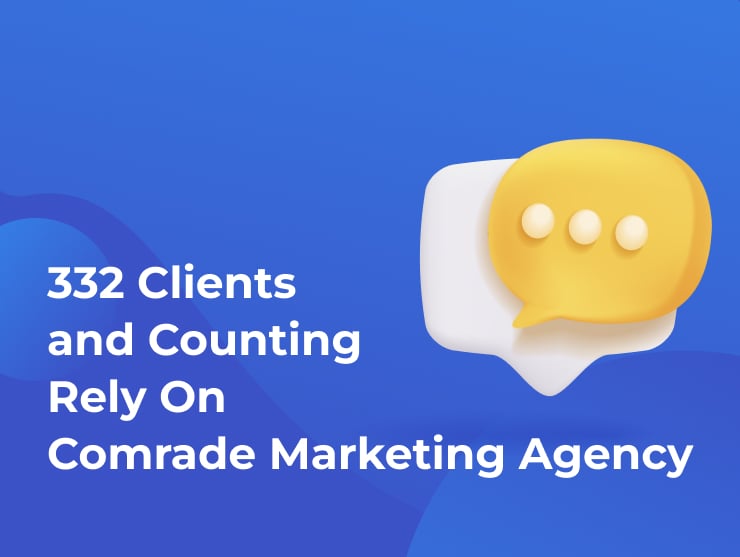Healthcare email marketing has become a vital communication tool in modern medical practices. As healthcare providers seek more effective ways to engage patients, HIPAA-compliant email marketing offers a powerful solution for connecting with and educating their audience.
Email marketing in healthcare is a digital marketing strategy that involves sending targeted and personalized emails to communicate with prospective patients, healthcare professionals, and other stakeholders in the healthcare ecosystem.
Throughout this guide, we will delve deeper into the strategies, best practices, and examples of successful healthcare email marketing campaigns. By understanding the power of email marketing for healthcare, medical organizations can effectively leverage this powerful tool to engage, educate, and inspire their audience. So, let’s talk healthcare email marketing and discover the untapped potential it holds for driving growth and success in the industry.
Key Benefits of Healthcare Email Marketing for Medical Practices
When it comes to the healthcare industry, email campaigns offer a multitude of benefits that can revolutionize patient communication and engagement. Email marketing is one of the most effective marketing channels for healthcare sector, with an average ROI of $42 for every $1 spent.
There are many benefits to using email marketing in the healthcare industry, including:
- Increased patient engagement: It’s a great way to stay top-of-mind with patients and encourage them to engage with your organization. You can do this by sending regular emails with news and updates about your services, reminders of upcoming appointments, or even promotions and discounts.
- Cost-effectiveness: Email marketing in healthcare is a very cost-effective marketing channel. Once you have created your email list, the cost of sending emails is relatively low. This makes it a great option for healthcare providers with limited marketing budgets.
- Improved patient satisfaction: When patients feel like they are being kept informed about their care and are receiving valuable information from your organization, they are more likely to be satisfied with their experience. For example, you could send an email to patients with diabetes with tips on how to manage their condition, or you could send an email to parents of young children with information about common childhood illnesses.
- Strengthened referral networks: Healthcare email marketing strategies can help you strengthen your referral networks by keeping your patients informed about your services and encouraging them to refer their friends and family to your organization. For example, you could send an email to patients who have recently referred a friend or family member to your organization with a thank-you note and a coupon for a free service.
How to Attract Clients by Email Marketing Content?
In this section, we will show you some effective healthcare email marketing examples that are designed to attract and engage clients effectively. From welcome email to helpful health tips, we will show you some proven strategies to optimize your email content for maximum client attraction.
1. Welcome Email Series
- Introduction and Thank You: Start by welcoming new subscribers and expressing gratitude for their interest in your healthcare organization.
- Overview of your healthcare organization: Provide a brief introduction to your organization, highlighting your mission and key services.
- Valuable resources and content recommendations: Offer links to relevant articles, blog posts, or educational materials that can help patients stay informed and engaged.
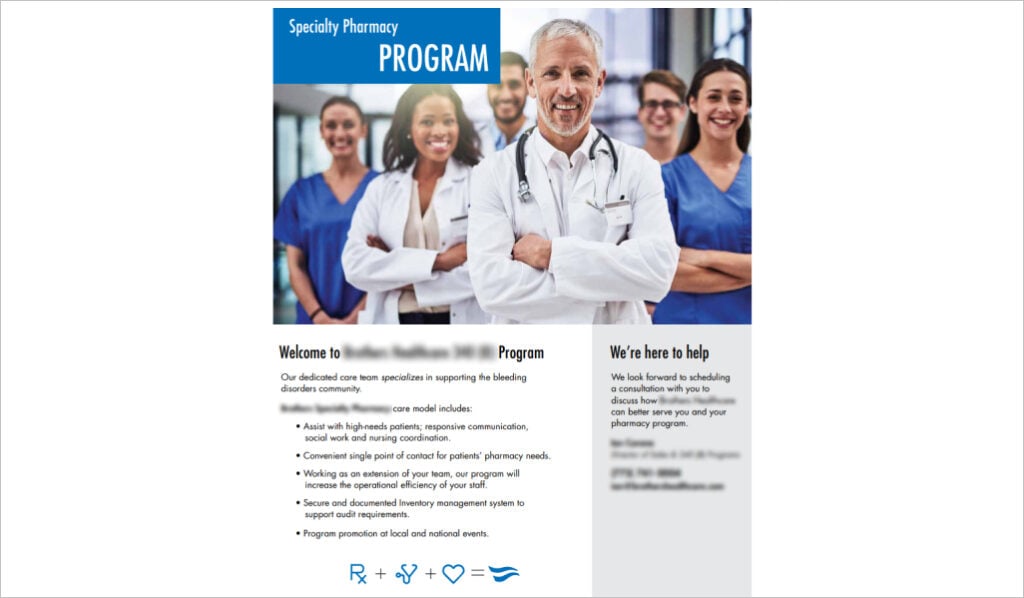
Example: “Welcome to our healthcare family! We are thrilled to have you on board. As a new subscriber, we want to give you a warm welcome and express our gratitude for choosing us. At [Healthcare Organization], our mission is to provide exceptional care and support to our patients. To help you make the most of our services, we have curated a list of valuable resources and content recommendations, ranging from informative articles on disease prevention to handy nutritional tips. Start your health journey off right by exploring these resources.”
2. Educational Content
- Health tips and advice: Share practical tips for staying healthy, managing common health issues, and preventing diseases.
- Disease prevention and management: Educate patients about the importance of preventive care and share strategies for managing chronic conditions.
- Nutritional and lifestyle guidance: Offer healthy eating tips, exercise recommendations, and guidance on adopting a balanced lifestyle.
- Latest medical research updates: Keep patients informed about advancements in healthcare by sharing the latest research studies and findings.
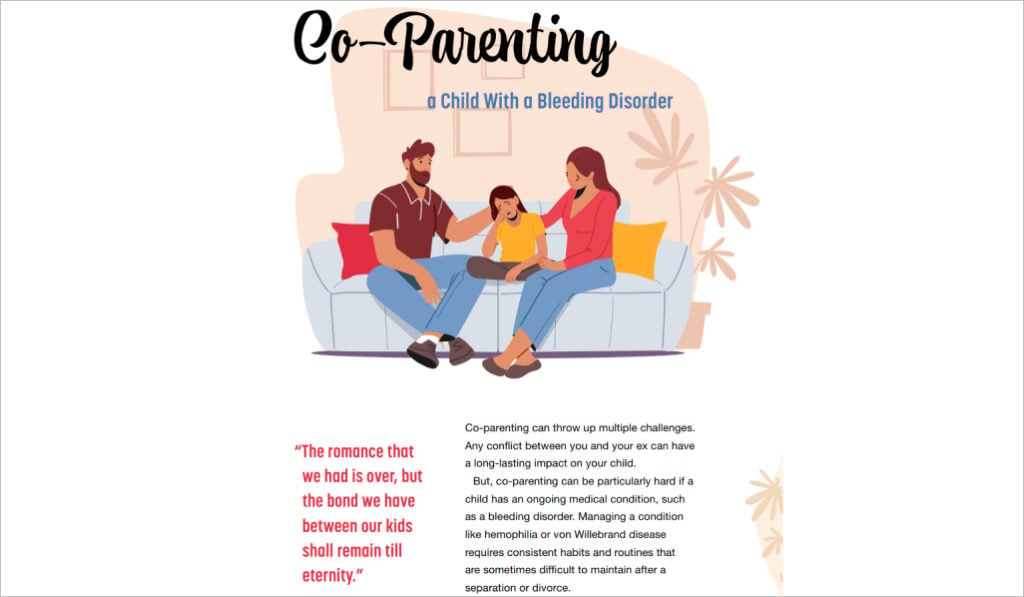
Example: “We believe that knowledge is power when it comes to your health. That’s why we are dedicated to providing you with educational content that can empower you to make informed decisions. In our newsletters, you will find health tips and advice on a variety of topics, such as managing stress, maintaining a healthy diet, and staying active. We also keep you up to date with the latest medical research, ensuring that you have access to the most current information on treatments and therapies.”
Wellness and Healthy Living
- Fitness and exercise tips: Share workout routines, fitness challenges, and tips for staying active.
- Stress management techniques: Provide strategies for reducing stress, such as mindfulness exercises and relaxation techniques.
- Mental health and mindfulness practices: Raise awareness about mental health and offer practices for improving well-being and resilience.
- Sleep hygiene and relaxation methods: Educate patients on the importance of sleep and provide tips for improving sleep quality.
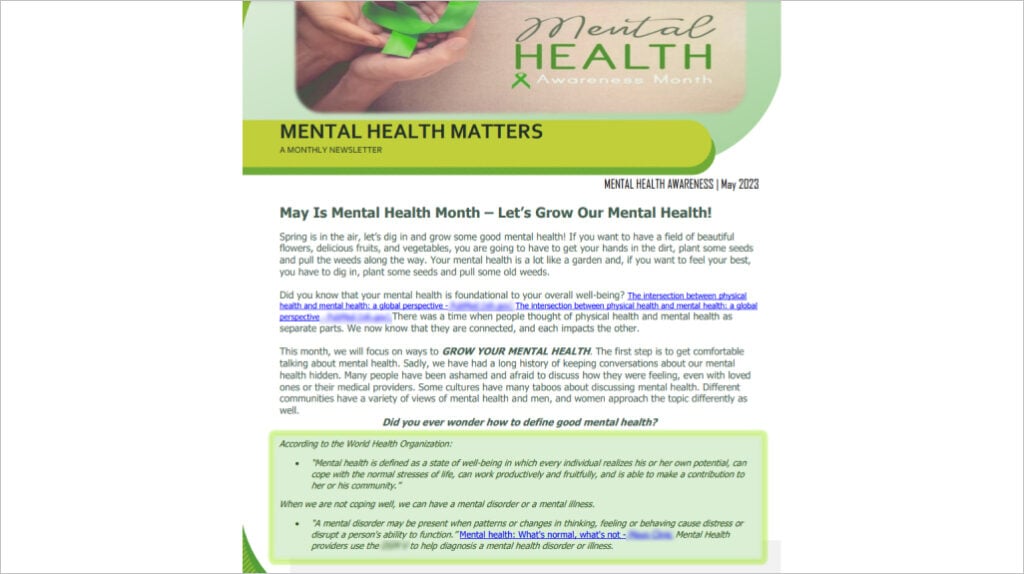
Example: “A healthy lifestyle encompasses more than just physical health. It also includes mental well-being and overall wellness. In our email newsletters, we focus on promoting wellness and healthy living by sharing fitness tips, stress management techniques, mindfulness practices, and sleep hygiene tips.”
4. Seasonal and Holiday Health Tips
- Tips for staying healthy during flu season: Provide advice on flu prevention, vaccination information, and hygiene practices.
- Healthy recipes for holidays and celebrations: Share nutritious recipes for holiday meals and celebrations.
- Safety reminders for summer and outdoor activities: Offer safety tips for enjoying outdoor activities safely during the summer months.
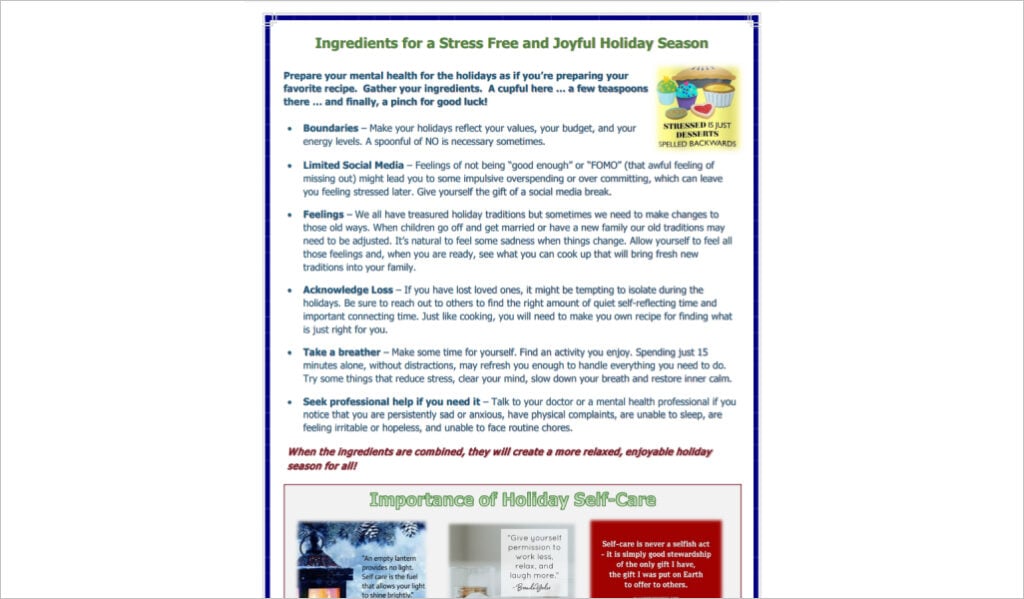
Example: “Flu season is upon us, and we want to equip you with the necessary tools to stay healthy. In our newsletters, you will find useful tips on flu prevention, information about flu shots, and hygiene practices to keep you and your loved ones protected.”
5. Promotions and Special Offers
- Discounts on specific healthcare services: Inform patients about discounted rates or special offers on specific healthcare services.
- Free screenings or health assessments: Offer free health screenings or assessments to encourage patients to take charge of their health.
- Referral incentives for recommending your organization: Create referral programs that provide incentives for patients who refer others to your healthcare organization.
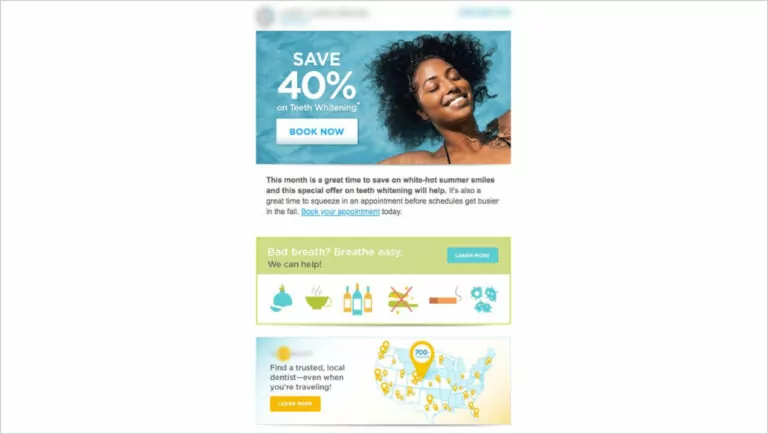
Example: “We believe that excellent healthcare should be accessible and affordable. That’s why we are excited to share exclusive promotions and special offers with you. Keep an eye out for our newsletters, where we will provide information about discounted rates on specific healthcare services. We also offer free health screenings or assessments at specific times throughout the year. And if you have had a positive experience with us, why not share the love? Our referral program rewards you for recommending our organization to your friends and family, ensuring that everyone can benefit from our exceptional care.”
6. Patient Success Stories and Testimonials
- Inspiring stories of patient recoveries: Share stories of patients who have overcome challenges and experienced positive outcomes.
- Testimonials showcasing the quality of care: Feature testimonials from satisfied patients, highlighting their positive experiences.
- Patient case studies demonstrating treatment outcomes: Share in-depth case studies that showcase the effectiveness of specific treatments or therapies.

Example: “We are incredibly proud of our patients and the progress they make on their health journeys. In our newsletters, we regularly feature inspiring stories of patient recoveries, highlighting the strength and resilience of individuals who have overcome various health challenges. You’ll also find testimonials from our satisfied patients, sharing their positive experiences and praising the quality of care they received. Furthermore, we provide detailed patient case studies that delve into specific treatment outcomes, demonstrating the effectiveness of our healthcare services.”
7. Community Involvement and Events
- Announcements of community outreach programs: Keep patients informed about your healthcare institution’s involvement in community outreach programs.
- Participation in health fairs or local events: Share updates about your participation in health fairs, local events, or charitable initiatives.
- Volunteer opportunities for patients to get involved: Encourage patients to give back by providing information about volunteer opportunities within the community.
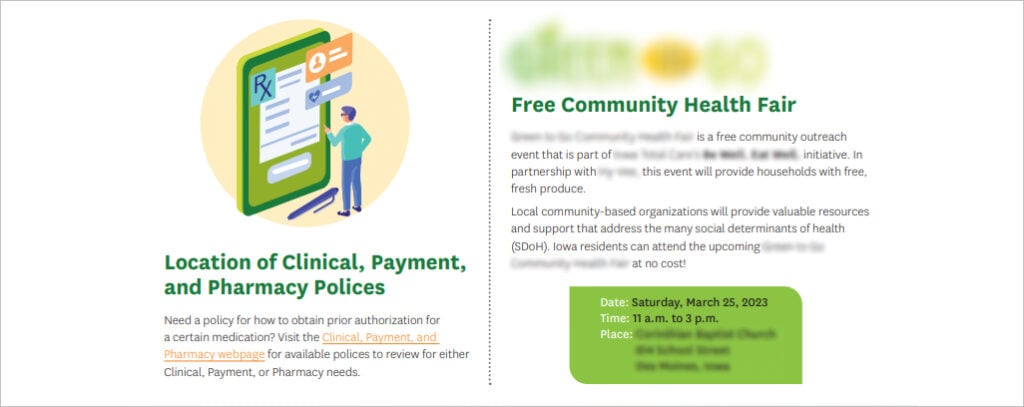
Example: “Whether it’s organizing health fairs, participating in local events, or partnering with charitable organizations, we are dedicated to making a positive impact. You’ll receive regular announcements about these events, allowing you to join us in our mission to create a healthier community. Additionally, we understand the value of volunteering and the impact it can have on both the giver and the recipient. That’s why we provide information about volunteer opportunities within the community, enabling you to get involved and make a difference.”
8. Ask for Feedback and Surveys
- Request patient feedback on experiences: Encourage patients to share their feedback on their experiences with your healthcare organization.
- Survey to gather insights and improve services: Conduct surveys to gather valuable insights and suggestions for improving the quality of your services.
- Highlight improvements made based on feedback: Share updates with your patients on the changes and improvements implemented based on their feedback.
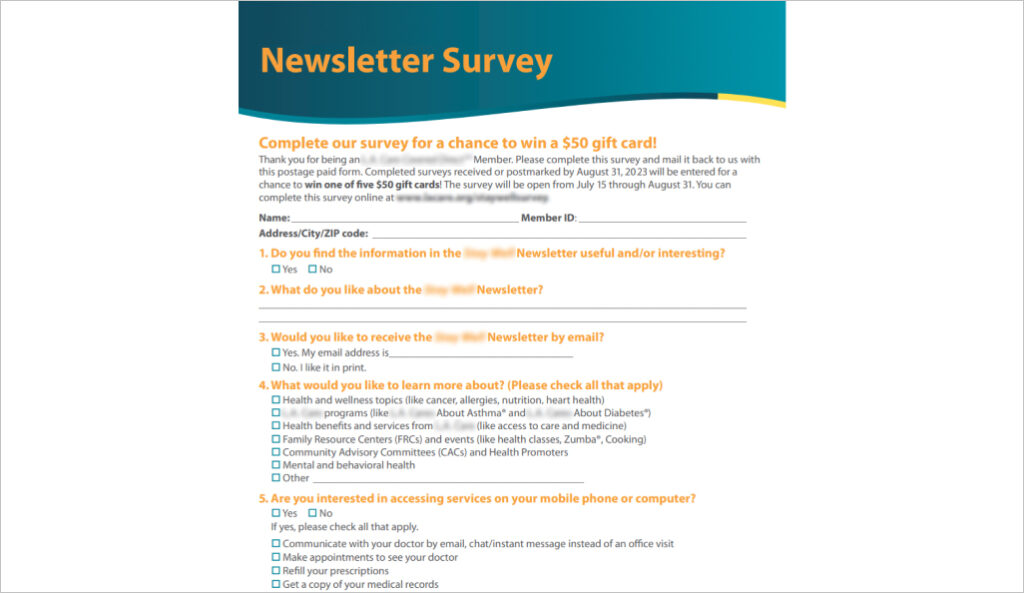
Example: “Your voice matters to us, and we want to ensure that we constantly improve and meet your needs. That’s why we appreciate your feedback on your experiences with our healthcare organization. Our newsletters will contain requests for your valuable input, allowing us to understand your perspectives and make necessary improvements. Rest assured, your feedback is taken seriously, and we will keep you informed about the positive changes we make based on your input.”
9. Important Health Alerts and Updates
- Public health announcements: Keep patients informed about critical public health announcements and alerts.
- Vaccine updates and guidelines: Provide updates on recommended vaccines and guidelines from reputable health organizations.
- New healthcare regulations and policies: Share updates regarding new healthcare regulations and policies that may impact patients.
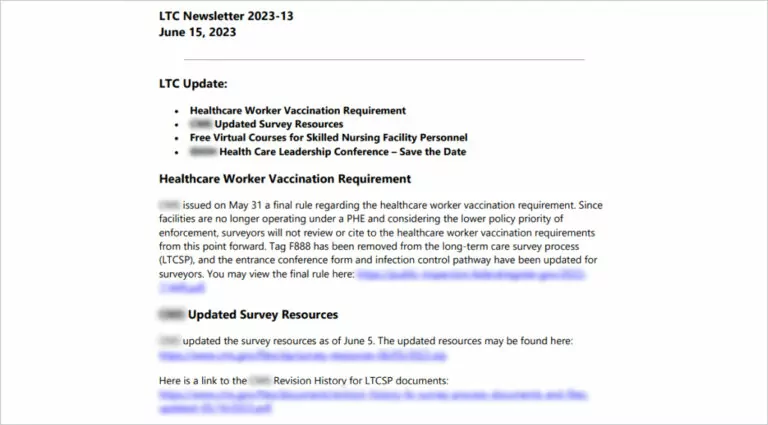
Example: “In our commitment to your well-being, we want to keep you informed about important health alerts and updates. Our newsletters include vital information on public health announcements, ensuring that you stay informed about potential risks or precautions. Additionally, we provide updates on recommended vaccines and guidelines from reputable health organizations, empowering you to make informed decisions regarding your healthcare. We also understand the complexity of healthcare regulations and policies, which is why we offer updates on any changes that may impact our patients. Your health and safety are at the forefront of our communication efforts.”
10. Appointment Reminders and Follow-Ups
- Appointment confirmation and details: Send reminders and confirmations for upcoming appointments, including date, time, and location.
- Preparing for appointments: Provide relevant information on how patients can prepare for their appointments, including any pre-appointment instructions.
- Post-appointment instructions and next steps: Follow up with patients after their appointments, sharing post-appointment instructions and information on the next steps in their healthcare journey.
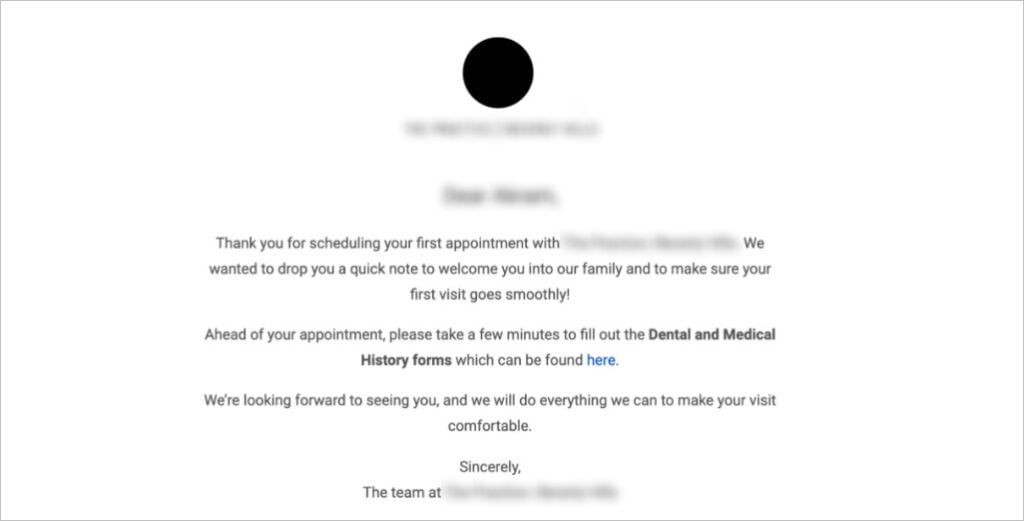
Example: “We understand that timely communication regarding appointments is crucial for your convenience and peace of mind. Our newsletters include appointment reminders and confirmations, ensuring that you never miss an appointment. We provide all the necessary details, including the date, time, and location, to help you stay organized. Furthermore, we want you to feel prepared for your appointments. That’s why we include relevant information on how to get ready and any pre-appointment instructions you may need to follow. After your appointment, we will continue to be in touch, sharing post-appointment instructions and providing you with information on the next steps in your healthcare journey.”
Building a Hipaa-Compliant Patient Email Marketing Database
Build a Quality Email List
A quality email list is essential for any healthcare provider who wants to effectively use a healthcare digital marketing campaign. A good email list will be made up of patients who have opted in to receive emails from your organization, and who are interested in the content you have to offer.
Here are some tips for building a quality email list for your healthcare emails:
- Obtaining permission to email patients: It’s crucial to obtain explicit permission from patients before adding them to your email list. This can be done through opt-in forms on your website, during patient registration, or by sending a confirmation email asking for consent. For example, you can include a checkbox on your patient intake form that allows patients to opt-in to receive emails about health tips and updates.
- Strategies for capturing email addresses: Implement various tactics to capture email addresses effectively. You can offer incentives such as exclusive content, free resources, or discounts in exchange for subscribing to your email list. For instance, you can create a landing page where patients can sign up to receive a free e-book on healthy living or a monthly newsletter packed with useful healthcare information.
- Ensuring data privacy and compliance with regulations (HIPAA): Maintaining patient confidentiality and adhering to regulations like HIPAA is of utmost importance in any healthcare email marketing campaign. Ensure that your healthcare marketing emails have robust security measures in place to protect patient data. Additionally, clearly communicate your data privacy policies to build trust with your subscribers.
Email marketing can be easier with the Comrade Digital Marketing Agency. Schedule a free consultation.
Crafting Compelling Email Content
Once you acquire email addresses, it is important to craft compelling email content that will engage your patients and encourage them to take action. Here are some tips for crafting a compelling healthcare newsletter:
- Subject lines and preview text: The subject line and preview text are critical for grabbing your subscribers’ attention and enticing them to open your emails. Use compelling and concise subject lines that create intrigue or offer a clear benefit. For example, “Discover the Secrets to a Healthy Heart” or “Get Exclusive Access to Health Tips from Our Experts.”
- Mobile-friendly design considerations and layout: With the increasing use of mobile devices, it’s essential to optimize your healthcare emails for mobile viewing. Ensure that your email design is responsive and displays correctly on different devices. Use a clean and visually appealing layout that makes it easy for subscribers to read and navigate your content.
- Calls-to-Action (CTAs) and conversion optimization: Include clear and persuasive calls-to-action in your emails to encourage engagement and conversions. For example, you can include CTAs like “Schedule an Appointment,” “Learn More,” or “Download Your Free Guide.” Optimize your CTAs by using contrasting colors, making them easily clickable, and placing them strategically within your email content.
Personalization Strategies for Medical Email Marketing Campaigns
Segment your patients’ email addresses based on specific demographics, medical conditions, or interests. This allows you to create tailored messages that resonate with each segment. For instance, if you have a segment of patients interested in nutrition, you can send them emails with personalized healthy recipes or dietary tips.
Utilize the patient data you have collected to segment your healthcare email marketing strategy effectively. This can include information such as age, gender, medical history, or past interactions with your organization. By leveraging patient data, you can send targeted healthcare newsletters that address specific needs or concerns. For example, if you have a segment of patients who recently underwent a specific procedure, you can send them follow-up emails with post-procedure care instructions.
Implement dynamic content and personalization techniques to make your emails more relevant and engaging. Dynamic content allows you to display different content blocks based on individual subscriber attributes. For example, you can personalize the email greeting with the recipient’s first name or display different product recommendations based on their previous purchases.
Want your website to actually bring in patients? Go with digital marketing for plastic surgeons!
Testing and Optimization
Regularly analyze email performance metrics such as open rates, click-through rates, and conversion rates. This data provides insights into what is working well and what can be improved. For example, if you notice low open rates, you should experiment with different subject lines to increase engagement.
Actively seek ways to optimize your email marketing efforts. Test different elements of your emails, including subject lines, CTAs, and content layouts, to identify what resonates best with your audience. Continuously refine and improve your email content based on the feedback and insights you gather.
Ready to revamp your site? Learn from the best dental websites out there.
Overcoming Challenges in Healthcare Email Marketing
Healthcare providers implementing patient email marketing must strictly adhere to HIPAA-compliant email regulations and security protocols to protect sensitive medical information. This can make it challenging to use healthcare marketing in email effectively. Here are some of the challenges healthcare organizations face when using healthcare marketing emails:
- HIPAA requirements: HIPAA regulations require healthcare providers to protect the privacy of patient data. This includes the email addresses of patients who have opted in to receive emails from your organization. You must have a privacy policy in place and be compliant with HIPAA regulations when collecting and using patient email addresses.
- Confidentiality and patient privacy: It is important to maintain the confidentiality and privacy of patient data at all times. This means not sharing patient data with any third parties without the patient’s consent. It also means using strong security measures to protect patient data from unauthorized access.
- Protecting patient data: You must take steps to protect patient data from unauthorized access, use, disclosure, alteration, or destruction. This includes using strong passwords, firewalls, and encryption. You should also educate your staff on the importance of protecting patient data.

Looking to scale or increase your revenue? Email marketing is proven to grow your business
Driving Results with Healthcare Email Marketing Strategy
An effective medical marketing strategy centered around healthcare email marketing offers numerous benefits, including improved patient engagement, increased brand awareness, and enhanced communication with your target audience.
Healthcare providers should embrace email marketing as a powerful tool to enhance patient engagement and improve healthcare outcomes. By leveraging the wide reach of email, you can keep patients informed about important updates, share valuable educational content, and encourage them to take proactive steps toward their health. Healthcare email marketing allows for personalized communication tailored to individual patient needs, fostering a stronger patient-provider relationship.
In conclusion, while healthcare email marketing presents challenges related to HIPAA requirements and protecting patient data, it also offers significant rewards. By prioritizing compliance, confidentiality, and privacy, healthcare organizations can leverage email marketing to drive positive results. To get started with healthcare email marketing and experience the benefits it can bring to your organization, contact Comrade Digital Marketing Agency today.
